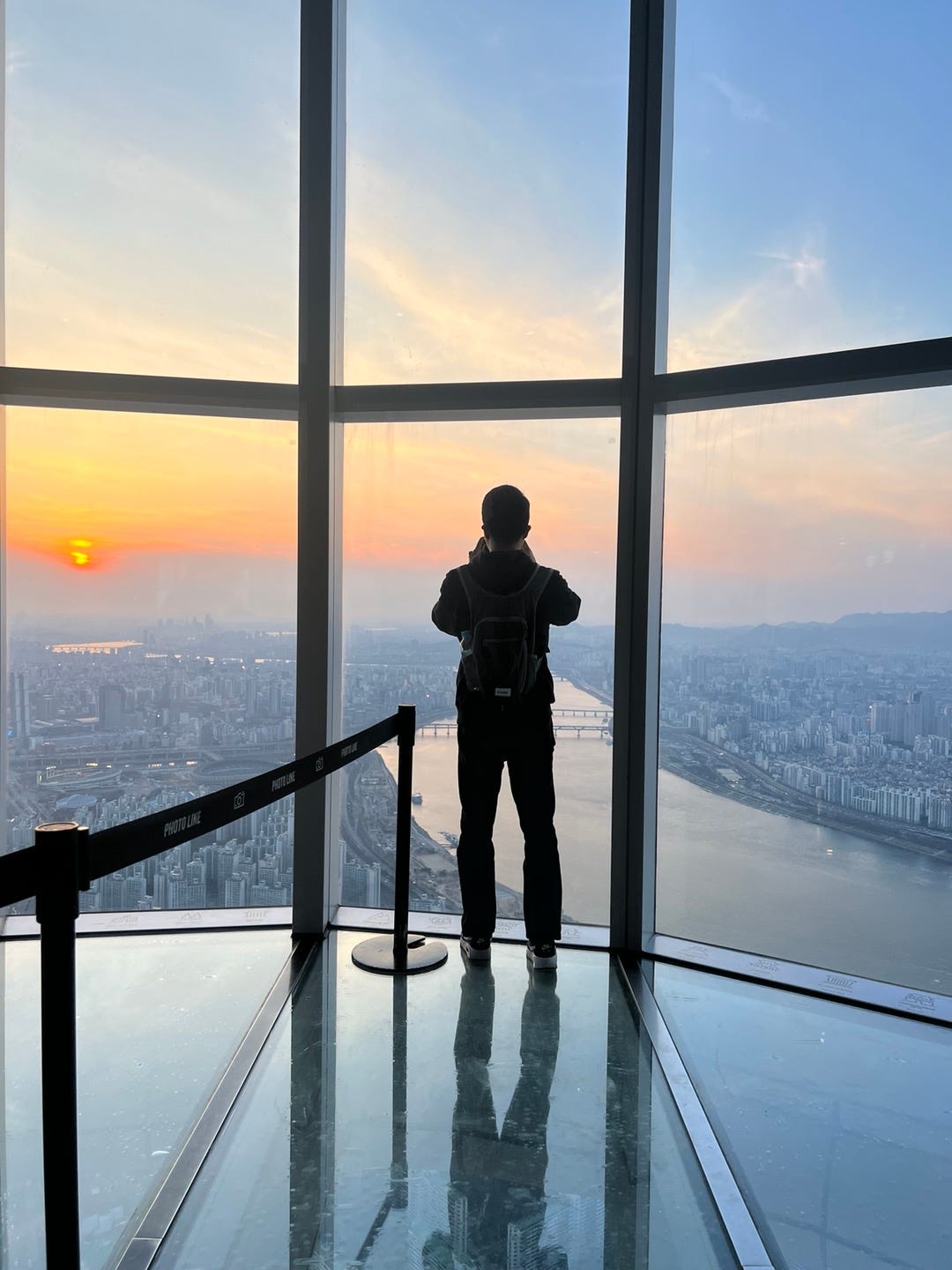The Traveler's Guide to Japan and South Korea
Observations and useful tidbits from a few weeks of travel
The past few weeks, I’ve had the pleasure of traveling in both Japan and South Korea. During my travels, I’ve noticed some differences between the two countries, which I will discuss here. Note that this is not meant to be a comprehensive list, nor am I trying to persuade the reader to travel to one country over the other; I’m simply listing some of my thoughts and observations, which I hope will be helpful to anyone reading this who is considering traveling to either country. Also note that my travels included the following cities in each country:
Cities I visited in Japan:
Tokyo
Kanazawa
Osaka
Kyoto
Nara
Hiroshima
Cities I visited in South Korea:
Seoul
Busan
Incheon
Siheung
Paju
Transportation
Both countries offer great public transportation options, including subway, high-speed train (e.g. Shinkansen in Japan, KTX in Korea) and bus, as well as alternative modes of transportation, including taxi, bike and, of course, foot. While there are many similarities between the two countries, there are some differences which are especially relevant for travelers new to these countries.
Navigation apps
In Japan, Google Maps works well for navigation, including public transit. It offers accurate directions in English, so there was not much of a learning curve as a traveler from the United States.
In South Korea, however, Google Maps is not effective for getting around due to geographic data restrictions. Instead, the recommended equivalent apps are Naver Map and KakaoMap. Additionally, there is another app called Subway Korea which is useful for visualizing subway routes. I personally used KakaoMap during my stay in Korea, which I found to be more difficult to use than Google Maps in Japan because many of the destinations are in Korean even when the app’s language setting is set to English. When I later tried Naver Map, I noticed that more of the text seemed to be in English compared to KakaoMap, so this may be something to consider for English speakers when choosing which app to use.
Subway
I found the subway stations in Korea to be more modern than the ones in Japan, and it was generally cheaper to use the subway in Korea than in Japan.
In both countries, the subway system felt well-designed and easy to navigate, and you pay for subway (and bus) rides using a card (Tmoney in Korea, Suica/IC in Japan). However, in Japan, you can also use a digital Suica card through Apple Pay, which was extremely convenient because I could reload my card directly on my iPhone instead of having to use a machine like in Korea.
Taxis
In Korea, I found taxis to be a cheap and effective option for getting around, especially when traveling in a group of people and when subway isn’t a viable option. For example, my parents and I almost exclusively used taxis to get around Busan. Kakao T is a popular app for booking taxis in Korea (think Korean version of Uber). However, I personally never used it and opted for finding taxis driving by or parked in designated areas, which worked well.
I never took a taxi in Japan, but I noticed that there generally seemed to be less taxis in Japan compared to Korea.
Bikes
Bikes are very common in Japan, especially in Tokyo, and you can rent them using apps like LUUP and Docomo Bike Share, depending on the bike port. I found biking to be a fun and cheap way to explore Tokyo.
I did not see many bikes at all in Korea. I don’t know why this is the case, but I felt that it may not be as safe to bike in Korea because drivers there seemed to be a bit more “wild” than in Japan — one way to summarize this is that in Japan, people have the right of way, whereas in Korea, cars have the right of way.
Trains
In Japan, you can buy a Shinkansen (bullet train) ticket at the station minutes before departure. The ticket machines were confusing to use, but this wasn’t a problem because I was able to buy my tickets at the ticket counters.
In Korea, I only used the train (KTX) for a round trip from Seoul to Busan. I had to book my tickets at least a day in advance online. I booked them on the Korail website, which was cheaper than Rail Ninja but archaic and difficult to navigate.
Both the Shinkansen and KTX were comfortable and fast.
Food
Starting with the obvious, the cuisine is different between the two countries — in Korea, you will find more Korean food while in Japan, you will find more Japanese food. However, there are some less-obvious differences I observed which may be worth keeping in mind as a traveler:
In Japan, it’s easier to eat alone in restaurants, both due to cultural norms and the fact that many Japanese restaurants are designed to cater to solo diners through their seating arrangements (e.g. bars, stalls, etc.).
I found Japanese convenience stores to be superior to Korean convenience stores when it comes to food variety. For example, I could find sandwiches and sometimes even fruit in Japanese convenience stores, which was not the case at the convenience stores I visited in Korea. However, it’s important to note that I only went to a couple convenience stores in Korea versus many in Japan.
The food was generally cheap in both countries, although fruit was quite expensive in Korean grocery stores.
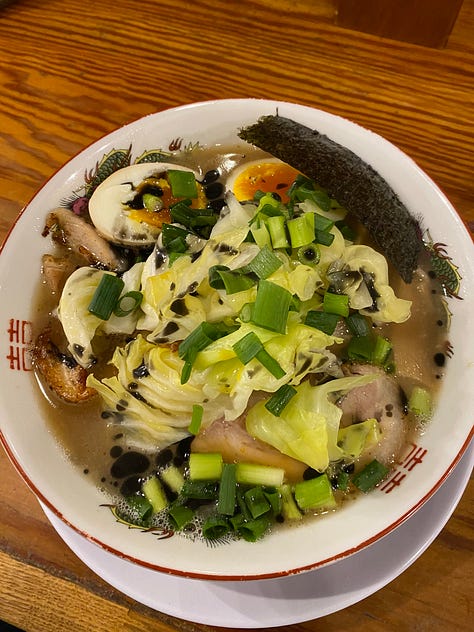
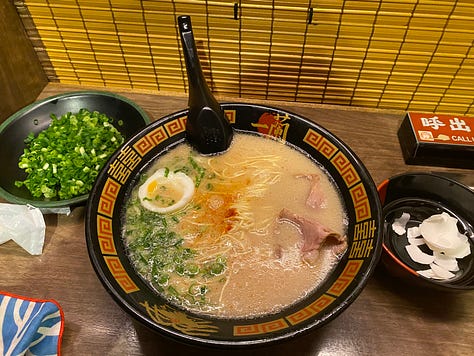
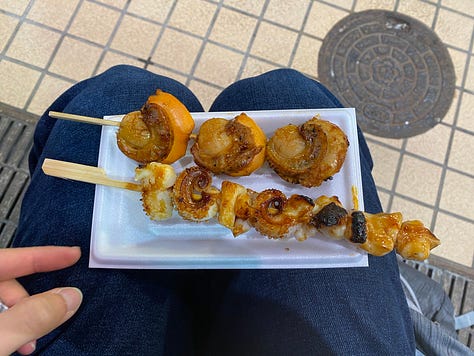
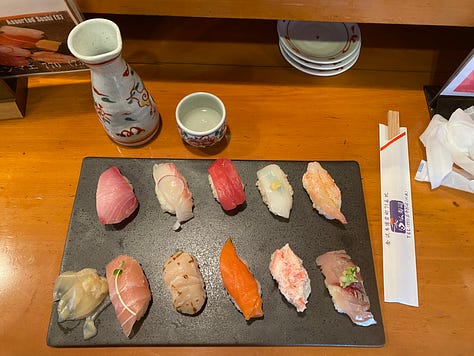
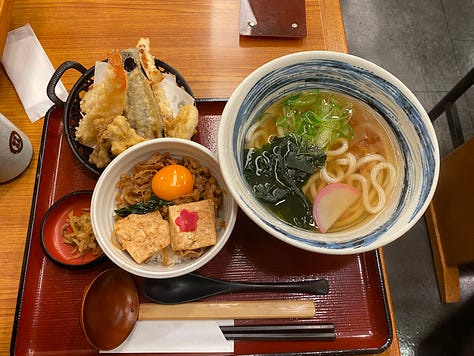
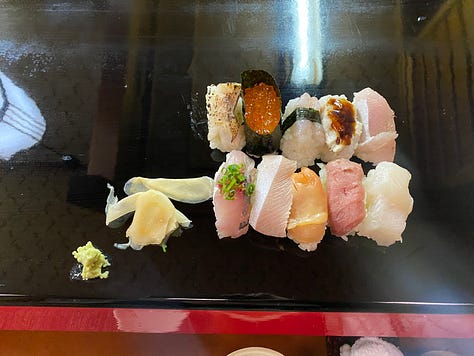
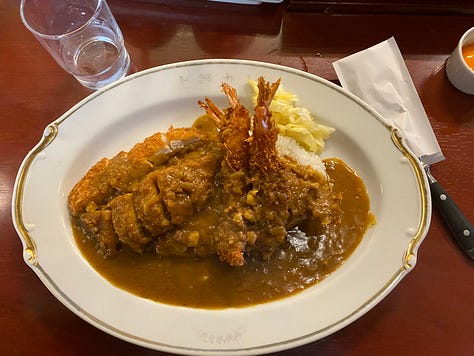
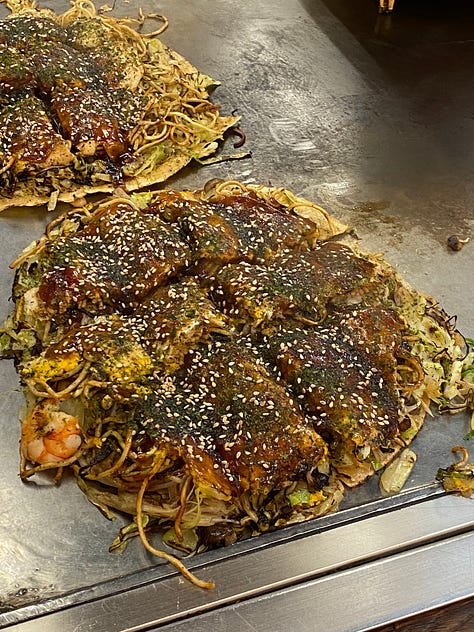
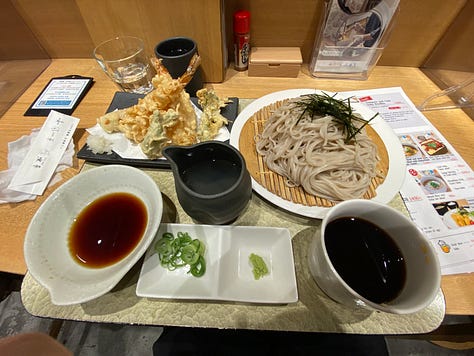
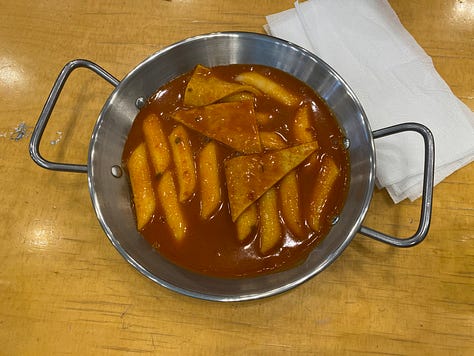
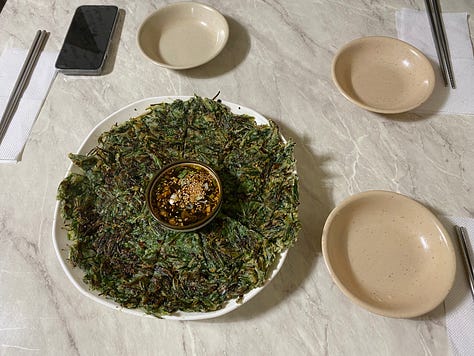
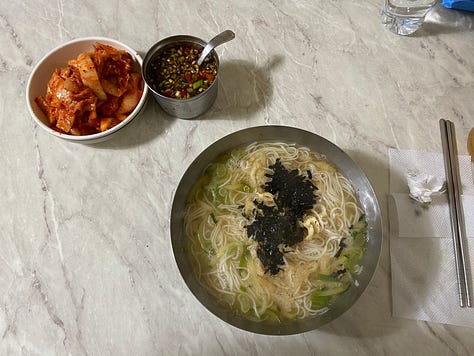
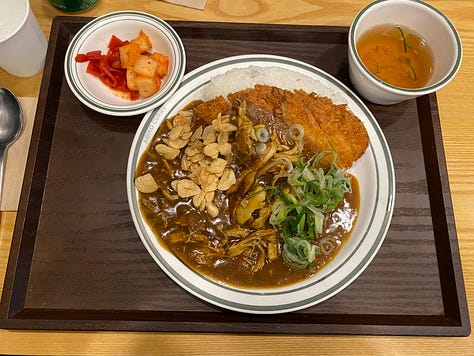
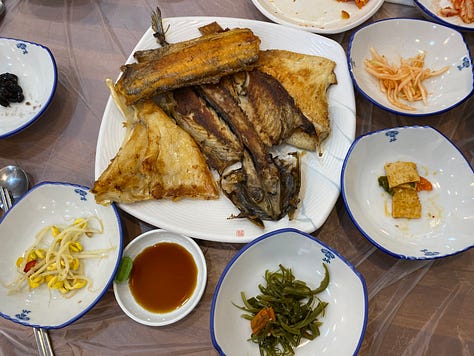
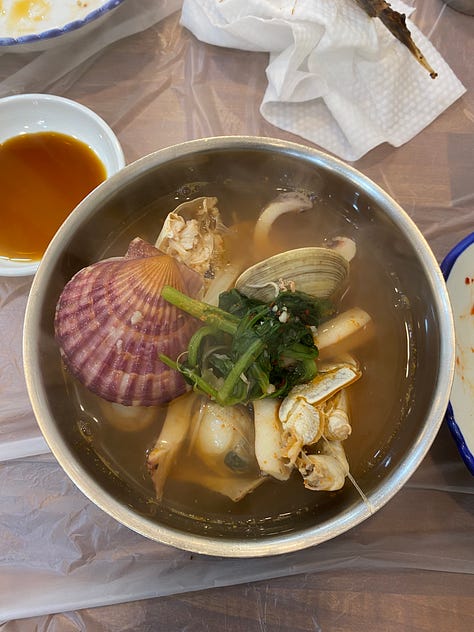
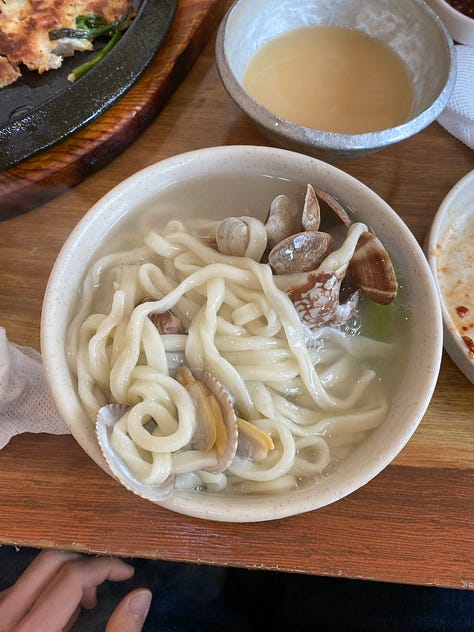
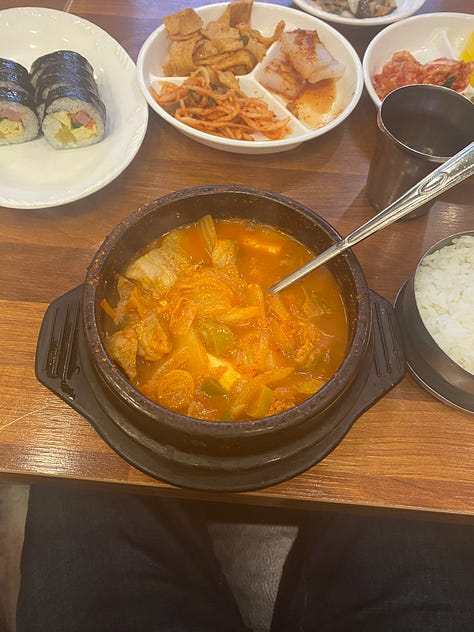
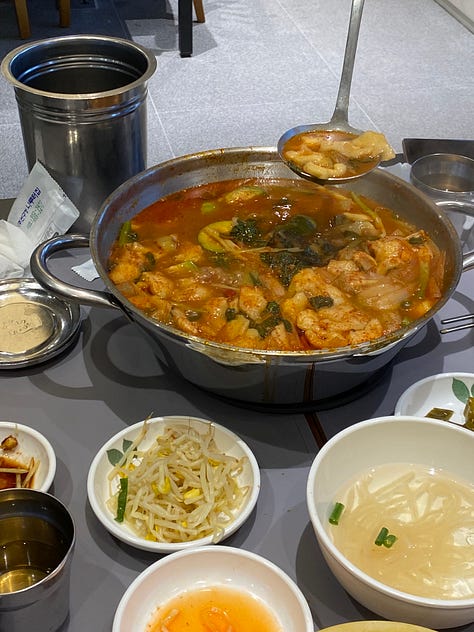
Attractions
I found both countries to offer a wide variety of attractions, with overlap in certain categories as well as some unique to each country. In both countries, you can find shopping districts, observatory towers, and museums.
In Japan, there are many world-famous temples (e.g. Sensoji, Kiyomizudera, Kinkakuji), shrines (e.g. Fushimi Inari, Meiji, Itsukushima) and castles (e.g. Himeji, Osaka, Matsumoto) as well as Nara Park (known for its deer), Mount Fuji, and the Peace Memorial Park in Hiroshima.
In South Korea, there is Gyeongbokgung Palace, Jeju Island, the cultural villages in Busan, the Korean Demilitarized Zone (DMZ) near the border with North Korea, and Nami Island.
Of course there are countless other attractions in both countries not listed here. While I feel that Japan may offer a greater variety of interesting attractions for the typical sightseeing tourist, this will ultimately come down to one’s personal interests.


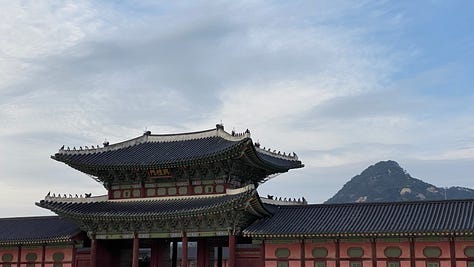
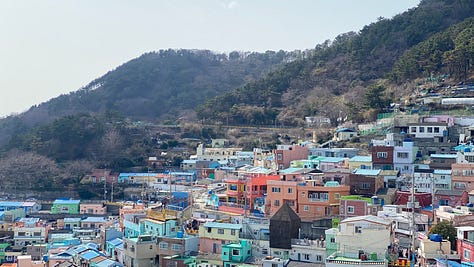
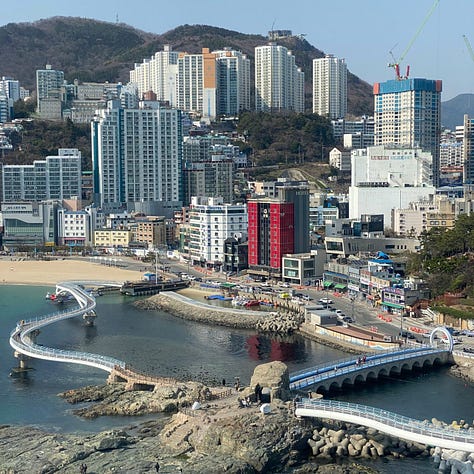




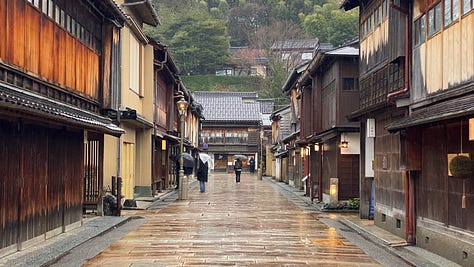
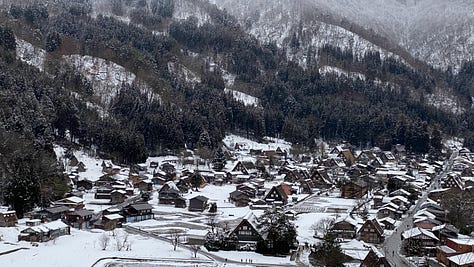
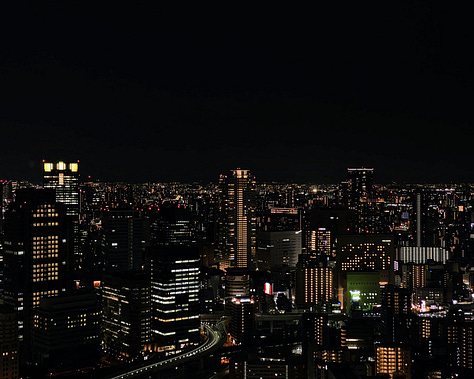
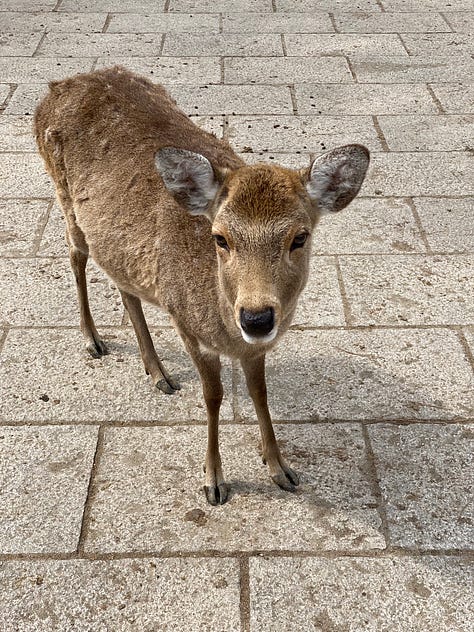
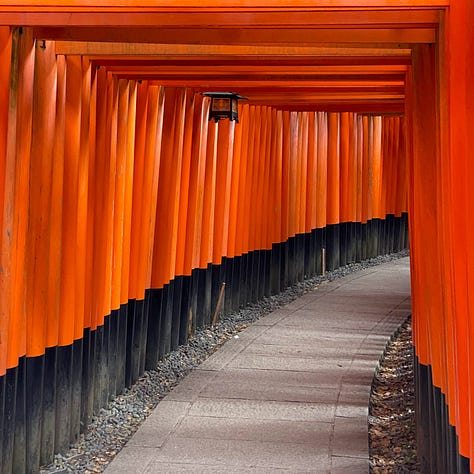
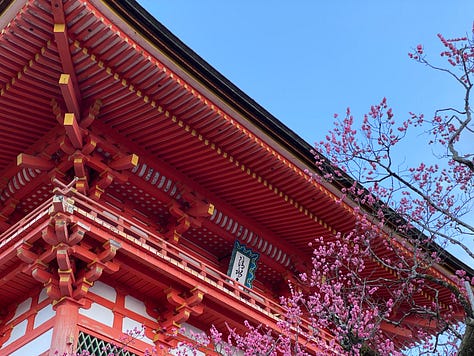

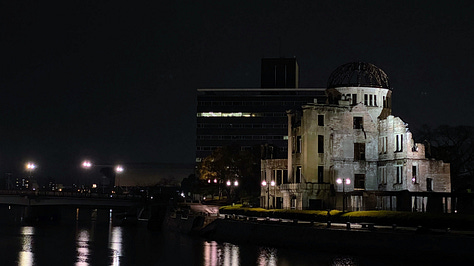
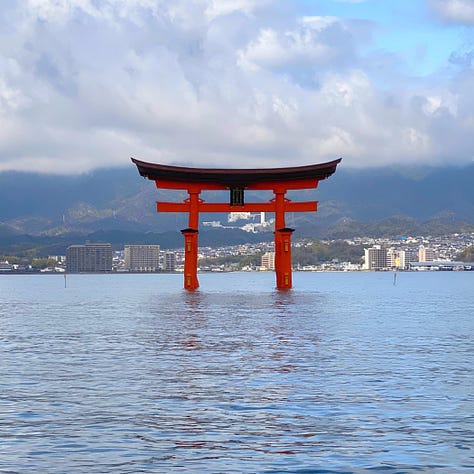
Cash vs Credit Card
In Japan, some restaurants and attractions only accept cash, so it’s important to carry cash. Obtaining cash is straightforward: go to any convenience store (e.g. 7-Eleven, FamilyMart) and use the ATM, which will give you a decent currency exchange rate.
In Korea, it’s much less important to carry cash because most places accept credit card.
Culture of Politeness
In Japan, politeness is an integral part of the culture; people are especially careful not to offend or inconvenience others, sometimes to a fault. One example that comes to mind is when I was in an elevator in an Osaka hotel. An older gentleman bowed to me and the others in the elevator as stepped in, then apologetically said sumimasen, which means “I’m sorry” in Japanese, when he was exiting the elevator, even though there was no reason to be sorry. Even though this example may be an outlier, as a traveler in Japan, it’s important to respect the culture and show politeness when interacting with others. Here are some things to keep in mind:
Don’t shout or speak loudly in public, especially while in public transit.
Don’t take phone calls while in public transit.
Don’t eat while walking or inside public transit. One exception: it’s fine to eat in the Shinkansen.
Don’t cut in line, even if you’re joining a friend who is already in line.
Don’t tip. Unlike some other countries like the United States, it’s not expected and sometimes even offensive in Japan.
In Korea, while politeness is still important, I found this aspect of the culture to be a bit relaxed in comparison. While there are some similarities with Japan (e.g. not eating while walking or in public transit, not tipping), I would often see people chatting and taking calls while on the subway, and workers in service industries (e.g. restaurants, shopping malls) did not seem to be quite as polite as their Japanese counterparts. For example, they seemed to bow less and were sometimes more aggressive to attract passersby. I do not mean to say that they were impolite; I simply felt there was less of a politeness emphasis in Korea when compared to Japan.
Beauty Standards
Korea is well-known for its beauty industry, particularly cosmetics and plastic surgery, and for good reason. By observing the ads on the digital billboards in the subway stations and in the subways themselves, the cosmetics stores in various shopping districts and the plastic surgery clinics dispersed throughout Seoul, it was clear that high beauty standards permeate the culture.
In Japan, while beauty standards exist, I did not feel like they were as drastic as in Korea, where I felt like I was being inundated by them.
Miscellaneous
Walking on the right or the left?
In Korea, you walk and drive on the right side. In Japan, it’s the opposite: you walk and drive on the left side. This also applies to escalators: you stand on the left side and walk on the right side. This is important to keep in mind since you don’t want to be that oblivious traveler who blocks people who want to walk up or down the escalator. To make things more confusing, it’s the opposite in Osaka: you stand on the right side and walk on the left side, like in Korea and the United States.
Currency exchange rates
At the time of writing this article (March 23, 2024), the dollar-to-yen exchange rate is at 151.42 yen to the dollar, which is historically favorable for those traveling with USD. In fact, the past few months have seen the highest rates in decades.
The dollar-to-won exchange rate is currently 1344.60 won to the dollar, which is also very favorable for USD-holders, though not quite as historic as the Japanese rate.
These rates are important to consider especially for USD-holders, for whom everything in Japan and Korea essentially comes at a significant discount.
Conclusion
I’ve enjoyed my time in both Japan and South Korea and would highly recommend both as travel destinations. If you’re considering traveling to either country, I hope this article is useful for you. If you have been to either country and/or have any thoughts to share, please leave a comment!




